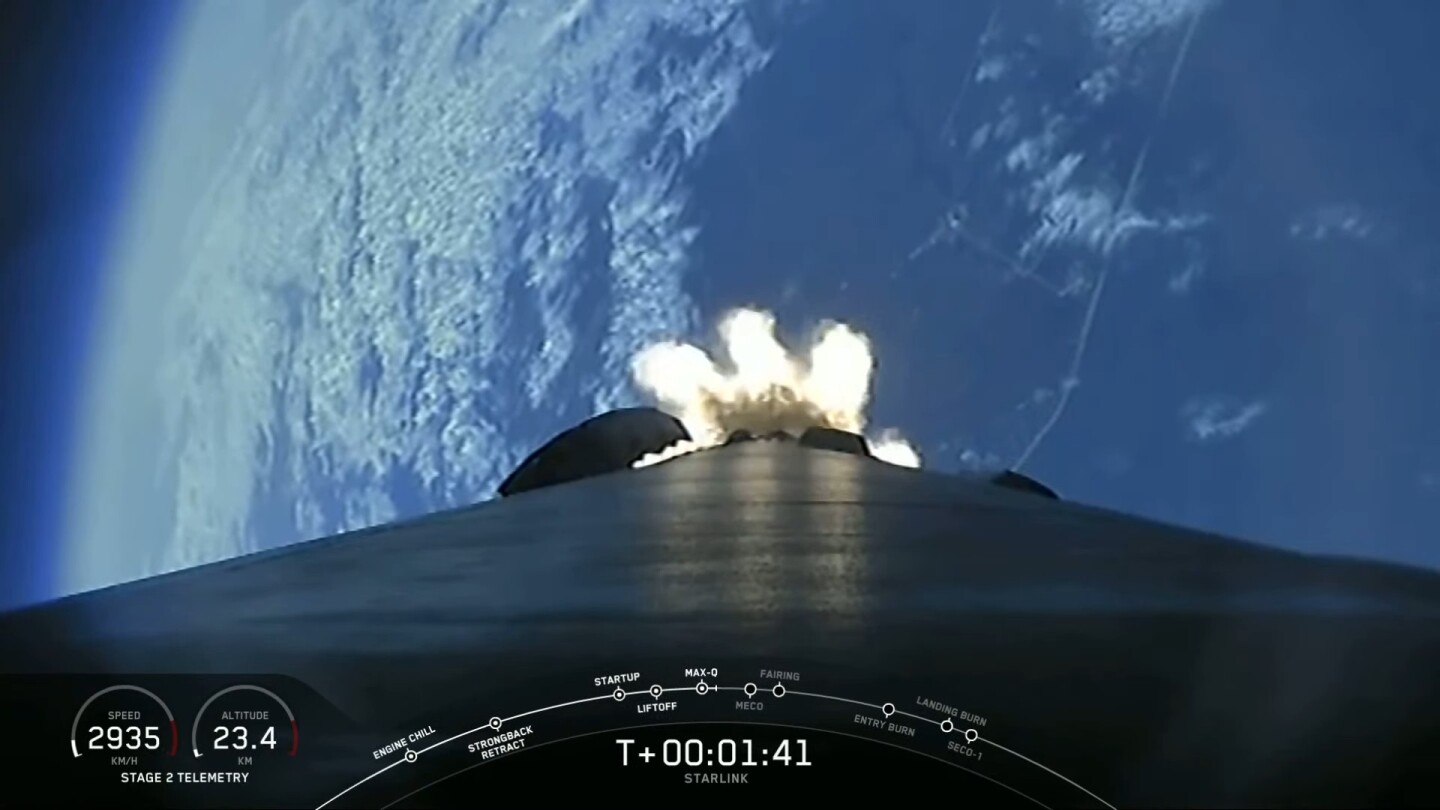SpaceX has successfully deployed 60 communication satellites to bolster the population of its Starlink megaconstellation. The launch saw a reused Falcon 9 rocket blast the satellites into low-Earth orbit before returning to Earth to land on the drone ship Of Course I Still Love You. Two other vessels in the SpaceX fleet attempted to catch the rocket fairing as it fell back to the surface.
SpaceX is currently busy launching and positioning a vast fleet of compact Starlink satellites with the goal of providing near global internet coverage by the year 2021. Each satellite weighs roughly 260 kg (about 570 lb), sports four phased array antennas, and can be deployed 60 at a time.
The refurbished Falcon 9 used in today’s launch had previously flown in March 2019, when it propelled SpaceX’s Crew Dragon on its maiden test flight, and later in June the same year, when it successfully delivered the RADARSAT constellation to orbit.
The Falcon 9 rocket lifted off from Space Launch Complex 40 at the Cape Canaveral Air Force Station in Florida at 9:06 a.m. EST (14:06 UTC). The first stage performed nominally, with all nine Merlin engines working together to push its payload to the edge of space prior to separation. The upper stage then ignited its engine, and the rocket fairing was jettisoned.

Soon after separation, the core stage of the Falcon 9 performed a reentry burn that lasted a little under 20 seconds, and for the third time made a controlled descent through Earth’s atmosphere. Seconds before touching down the rocket ignited a single Merlin engine, and made an elegant landing on the droneship Of Course I still Love You.
The rocket core was not the only element of the mission that SpaceX sought to salvage. Two fairing recovery vessels, the imaginatively names Ms. Tree and Ms. Chief, attempted to catch the two halves of the aerodynamic sheath that had protected the payload during its ascent as they fell back to Earth.
Ms. Tree was able to successfully catch its fairing half. Sadly, Ms. Chief was a little wide of the mark.
Meanwhile, the second stage of the Falcon 9 - under the power of its single vacuum-optimized Merlin engine – soldiered on with its Starlink passengers.
A little over an hour after launch, the Starlink satellites departed from the Falcon 9 upper stage. The cluster deployed at an altitude of 290 km (180 mi) where they will stay while engineers assess whether the probes are performing as expected. Once given the green light, the satellites will use their ion thrusters to raise their operational altitude of 550 km (342 mi) above Earth’s surface.

SpaceX has come under criticism for the impact that its ambitious Starlink project could have on the night sky, including its potential to undermine sensitive deep space astronomy observations. The company has trialed an experimental darkening treatment on a Starlink satellite that went up in a previous launch, which aims to lower the albedo of the megaconstellation. According to a spokesperson during today’s live stream the company does not yet have the results of this experiment.
There is also the remote yet ever present threat of an orbital satellite on satellite collision. The first Starlink-related scare occurred on September 2 last year, when the European Space Agency was forced to heighten the orbit of its Aeolus satellite to avoid a potential collision.
According to SpaceX, its satellites have been designed to de-orbit themselves once they have reached the end of their life cycle using their on-board thrusters. Should the thrusters fail for any reason, the fleet’s relatively low orbit would see their altitude degrade due to atmospheric drag, and ultimately fall back to Earth within 1–5 years.
Source: SpaceX












